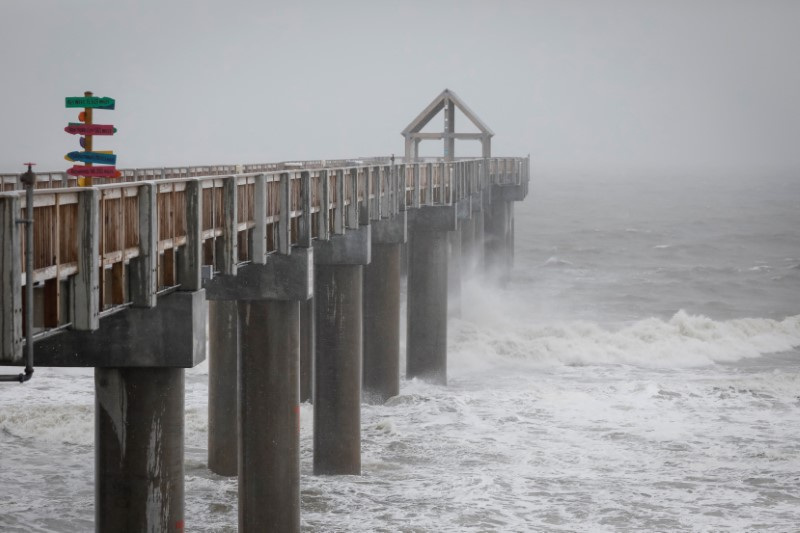By Rich McKay
ATLANTA (Reuters) – Tropical Storm Debby brought unrelenting rain to the U.S. Southeast as it drifted off the Carolinas on Wednesday morning, threatening the region with dangerous flooding before picking up speed in the coming days and racing north.
At least six people have died in Florida and Georgia in the wake of the storm, which barged into Florida’s Gulf Coast on Monday as a Category 1 hurricane and headed northeast. It is expected to next menace the Southeastern and mid-Atlantic coasts for days.
Governors in the Carolinas, Florida and Georgia have declared states of emergency. The storm has already left neighborhoods and communities underwater with widespread flooding washing out streets and inundating homes across the region.
“All North Carolinians across our state need to be prepared for a deluge,” North Carolina Governor Roy Cooper said at a briefing at the state’s Department of Emergency Management on Wednesday.
Officials in Charleston, South Carolina, lifted a citywide curfew on Wednesday, saying crews on standby were not needed to conduct any rescues overnight as the worst of the storm passed through.
Even so, the storm could still deliver another 3 to 9 inches (7.6 cm to 23 cm)) of rainfall to the Carolina coast, the National Weather Service said. That would bring rain totals to 25 inches (64 cm) in South Carolina and 15 inches (38 cm) in southeastern North Carolina near Wilmington and coastal Georgia.
Debby was about 55 miles (90 km) southeast of Charleston by late Wednesday morning and moving about 5 miles per hour (8 km per hour) toward the Northeast. It was forecast to make landfall again further north in South Carolina either Wednesday night or early Thursday, the National Hurricane Center said.
The system was packing sustained winds as high as 60 mph (96 kph), the center said, and it could strengthen throughout the day. The center was warning coastal residents from the South Santee River in South Carolina to Cape Fear, North Carolina, to be prepared for a dangerous storm surge.
Debby’s greatest threat remains the sheer volume of rain it is dumping on the Eastern Seaboard and the potential for flooding that could continue into next week.

“This is certainly an extreme rainfall event,” said Neil Dixon, a National Weather Service meteorologist in Charleston, noting that daily rainfall records have already been broken in the area. “In that respect, the flooding has been something that we haven’t seen in many years.”
Emergency management officials were keeping a close watch as the rainwater drained into the numerous river systems that snake through the Carolinas. The National Water Prediction Service forecast that seven waterways would reach major flood levels before the weather event runs its course.

